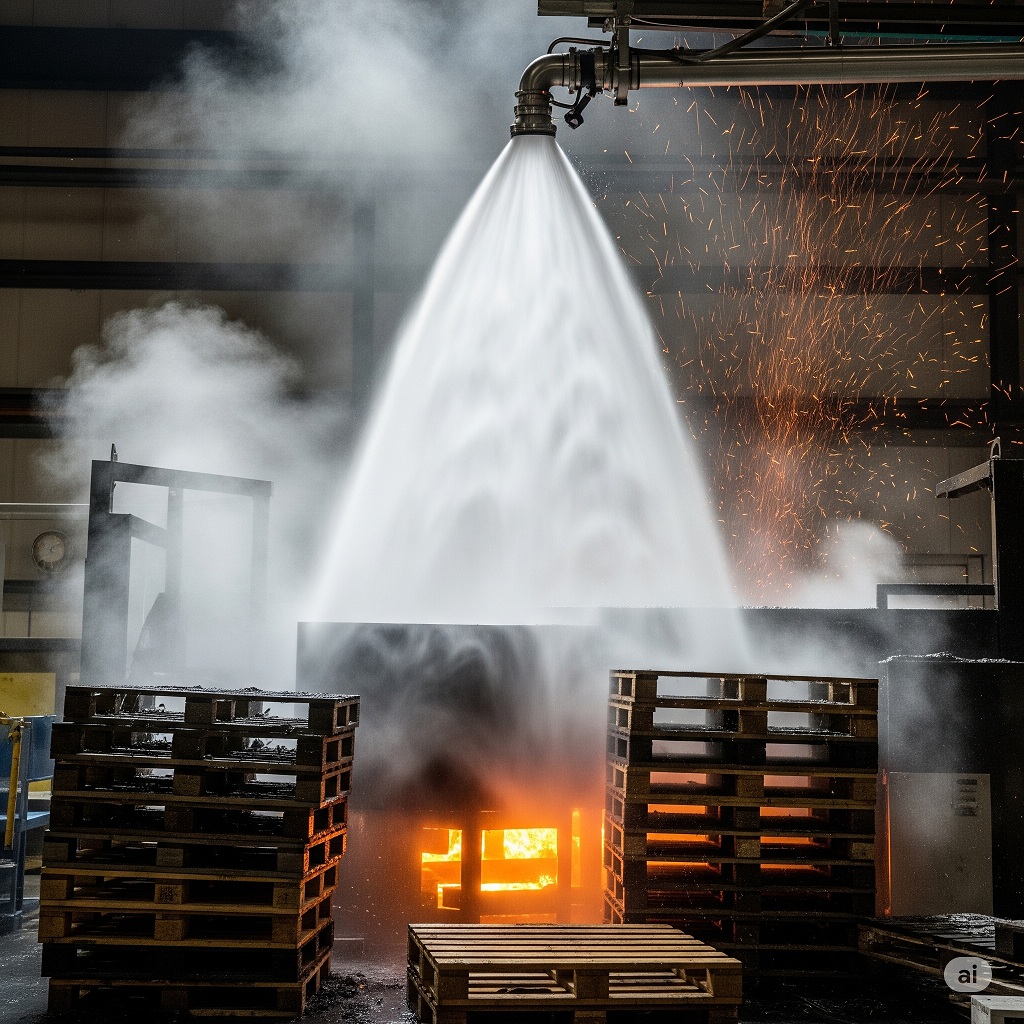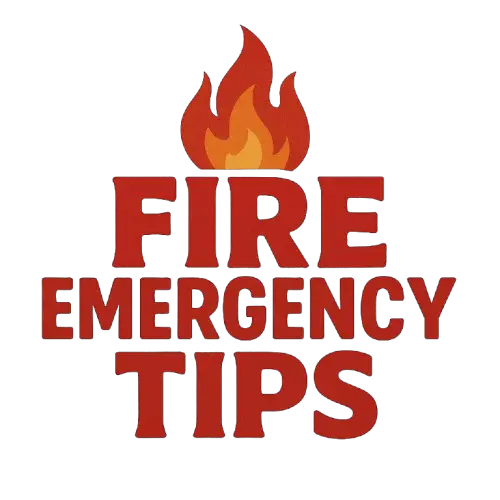
Have you ever wondered if you can put out fire with cold? As a seasoned blogger, I’ve delved into this intriguing question to uncover the truth behind this age-old myth. In this article, I’ll share my insights on whether cold can truly extinguish flames.
When it comes to firefighting, we often rely on water, foam, or chemicals to douse the flames. But what about using cold temperatures to combat fire? Join me as I explore the science behind fire extinguisher and whether cold can be a viable solution in emergency situations.
From discussing the principles of fire behavior to examining the effectiveness of cold in firefighting, I’ll provide you with a comprehensive analysis of this fascinating topic. Get ready to uncover the facts and myths surrounding the use of cold to put out fire.
Key Takeaways
- Cold alone cannot extinguish fire; it requires a combination of heat, fuel, and oxygen to sustain itself.
- Traditional firefighting methods involve using water, foam, or chemical agents to disrupt the fire triangle and effectively suppress flames.
- Understanding fire behavior is crucial in developing efficient firefighting tactics that address factors like fuel type and environmental conditions.
- Cooling agents like water or foam play a vital role in lowering the temperature of a fire, slowing down combustion reactions, and aiding in fire extinguishment.
- Alternative solutions such as fire blankets, fire extinguishers, fire suppression systems, fire retardant sprays, and sand can complement the use of cold in firefighting efforts.
“Cold Fire” is a modern fire suppression agent that rapidly extinguishes fires by cooling and encapsulating the fuel source. This is different from traditional methods of fire extinguishment, which primarily focus on removing heat (like with water), smothering (removing oxygen with agents like CO2 or fire blankets), or starving the fire (removing fuel).
Understanding Fire Behavior
Fire behavior is a complex interplay of heat, fuel, oxygen, and chemical chain reactions. When these four elements come together in the right proportions, a fire can ignite and sustain itself. Understanding how fire behaves is crucial in firefighting to effectively combat and extinguish flames.
- Heat: Fire generates heat through the exothermic reactions of combustion. This heat raises the temperature of nearby fuels, further promoting their combustion.
- Fuel: Any material that can sustain combustion is considered fuel for a fire. Different fuels burn at varying rates and temperatures, influencing the intensity of the fire.
- Oxygen: Fire requires oxygen to sustain its chemical reactions. The availability of oxygen affects the rate at which a fire burns.
- Chemical Reactions: During combustion, complex chemical reactions occur, releasing energy in the form of heat and light. These reactions create the flames we see during a fire.
In firefighting, strategies are developed based on the understanding of how fires behave under different conditions. From the rapid spread of wildfires to the controlled environment of a controlled burn, anticipating and managing fire behavior is essential for the safety of firefighters and the public.
To combat a fire effectively, firefighters must not only address the visible flames but also consider factors like the type of fuel burning, the presence of accelerants, and potential environmental conditions that could influence the fire’s behavior. By having a comprehensive understanding of fire behavior, emergency responders can develop more efficient and targeted firefighting tactics.
By considering the science behind fire behavior, we can evaluate the potential role of cold in extinguishing fires and its effectiveness compared to traditional firefighting methods.
Traditional Firefighting Methods
When it comes to Traditional Firefighting Methods, the most common approach involves using water or chemical agents to extinguish flames. Firefighters rely on water as a primary resource due to its ability to cool and smother fires, removing heat and oxygen essential for combustion. Fire hoses connected to hydrants or fire engines are standard tools for delivering water to the fire site.
In addition to water, firefighters may also use foam to suppress fires effectively, especially those involving flammable liquids. By forming a layer over the fuel surface, foam helps to prevent the release of flammable vapors, aiding in suffocating the fire. Chemical suppressants, such as dry powder or carbon dioxide, are also valuable in certain fire scenarios to disrupt the chemical reactions fueling the flames.
Structural firefighting often involves a combination of tactics tailored to the specific fire conditions. This may include ventilation techniques to control the flow of heat and smoke, search and rescue operations to ensure occupant safety, and fire containment strategies to prevent the spread of flames to adjacent structures.
Understanding the principles behind traditional firefighting methods is crucial for effective emergency response, enabling firefighters to select the most appropriate techniques for various fire types and intensities. By honing their skills and staying informed about advancements in firefighting technology, responders can continue to enhance their ability to combat fires and protect lives and property.
Myth Busted: Can Cold Extinguish Fire?
Cold alone does not extinguish fire. As a firefighter with years of experience, I can attest that simply applying cold temperatures to a fire is not enough to put it out. Fire requires a combination of heat, fuel, and oxygen to sustain itself. While cold can reduce the temperature of a fire and potentially slow its spread, it does not eliminate the other essential elements that keep the fire burning.
In firefighting, we focus on removing one of the elements of the fire triangle to extinguish flames effectively. Water, foam, and chemical agents are commonly used to disrupt the fire triangle by cooling the flames, creating a barrier between the fuel and oxygen, or interfering with the chemical reactions that support combustion. These methods address the core components that sustain a fire and are essential for effective fire suppression.
It’s important to understand that while cold may help lower the temperature of a fire to some extent, it is not a standalone solution for extinguishing flames. Combating a fire requires a comprehensive approach that addresses the complex dynamics of the fire triangle. By debunking the myth that cold can extinguish fire on its own, we can appreciate the multifaceted strategies and tools that firefighters employ to protect lives and property in emergency situations.
The Science Behind Fire Extinguishment with Cold
When it comes to fire extinguishment, understanding the role of cold is crucial. Cold alone doesn’t extinguish fires, but it does play a vital part in the process. Lowering the temperature of the burning material can slow down or even stop the combustion reaction, reducing the intensity of the fire.
Cooling the fire involves absorbing heat energy from the flames. By introducing a cold substance, whether it’s water, foam, or other cooling agents, the thermal energy within the fire is depleted, leading to a decrease in temperature and limiting the fire’s ability to sustain itself.
In essence, the science behind using cold to put out fires lies in disrupting the heat component of the fire triangle. By lowering the temperature using cooling methods, we can hinder the combustion process and achieve fire extinguishment.
Exploring Alternative Solutions
When it comes to fire extinguishment, cold is only one piece of the puzzle. There are alternative solutions that can complement the use of cold to effectively put out fires. Here are some additional methods to consider:
- Fire Blankets: These are nonflammable blankets made of fiberglass or kevlar that can be used to smother small fires by cutting off the fire’s oxygen supply.
- Fire Extinguishers: Portable devices that either contain water, foam, dry chemical powder, or carbon dioxide as extinguishing agents. Each type is suitable for different classes of fires.
- Fire Suppression Systems: These are automated systems commonly used in commercial and industrial settings. They can release substances like carbon dioxide or dry chemicals to suppress fires quickly.
- Fire Retardant Sprays: These sprays can be applied to materials to increase their resistance to fire. They work by forming a protective layer that inhibits combustion.
- Sand: In cases where water should not be used, such as electrical fires, sand can be used to smother the flames by cutting off their oxygen source.
While cold plays a significant role in fire extinguishment by lowering the temperature of burning materials, incorporating these alternative solutions can enhance firefighting efforts and improve overall safety.
Conclusion
Incorporating alternative methods like fire blankets, extinguishers with various agents, fire suppression systems, retardant sprays, and sand can enhance firefighting efforts alongside cold. These methods offer diverse approaches to extinguishing fires efficiently and improving overall safety. By combining these strategies with the cooling effect of cold, a more comprehensive and effective approach to fire extinguishment can be achieved. Remember, when it comes to fighting fires, having a range of tools and techniques at your disposal is key to successful firefighting.
Frequently Asked Questions
What are the alternative solutions to fire extinguishment mentioned in the article?
The article discusses using fire blankets, fire extinguishers with different agents, fire suppression systems, fire retardant sprays, and sand as alternatives to complement the role of cold in extinguishing fires.
How do fire blankets help in fire extinguishment?
Fire blankets are used to smother small fires by cutting off the fire’s oxygen supply, helping in extinguishing the flames quickly and effectively.
What are the different extinguishing agents used in fire extinguishers?
Fire extinguishers contain various agents like water, foam, dry powder, CO2, and others, which are effective in putting out different types of fires based on the material burning.
How do fire suppression systems enhance firefighting efforts?
Fire suppression systems are designed for quick and automated fire suppression, helping to contain and extinguish fires rapidly before they spread further.
Why are fire retardant sprays important in increasing fire resistance?
Fire retardant sprays add a protective coating to surfaces, reducing flammability and slowing down the spread of fires, thereby increasing fire resistance.
In what situations is sand a suitable alternative for extinguishing fires?
Sand is used as an extinguishing agent in situations where water may not be effective, such as with flammable liquid fires, by smothering the flames and absorbing heat to extinguish the fire.
